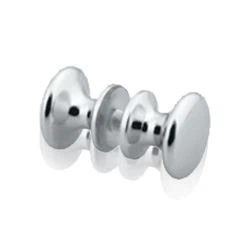Boat hatch top mount hinges play a crucial role in the functionality and durability of boat hatches. As a trusted supplier of Boat Hatch Top Mount Hinges, I understand the importance of using the right materials for these hinges. In this blog, I will explore the commonly used materials for boat hatch top mount hinges, their characteristics, and why they are suitable for marine applications.
Stainless Steel
Stainless steel is one of the most popular materials for boat hatch top mount hinges, and for good reason. It offers excellent corrosion resistance, which is essential in a marine environment where hinges are constantly exposed to saltwater, moisture, and other corrosive elements.
There are different grades of stainless steel, but the most commonly used for marine applications is 316 stainless steel. This grade contains molybdenum, which enhances its resistance to pitting and crevice corrosion. 316 stainless steel can withstand the harsh conditions of the sea for extended periods without rusting or deteriorating.
In addition to its corrosion resistance, stainless steel is also strong and durable. It can support the weight of the hatch and withstand the stresses and strains of regular use. Stainless steel hinges are available in various designs, including Quick Release Hinge, Stainless Steel Lift Off Hinge, and Stainless Steel Offset Hinge, providing flexibility for different boat hatch requirements.
Aluminum
Aluminum is another common material used for boat hatch top mount hinges. It is lightweight, which is an advantage as it reduces the overall weight of the boat. This can improve fuel efficiency and handling.
Aluminum also has good corrosion resistance, especially when it is anodized. Anodizing is a process that creates a protective oxide layer on the surface of the aluminum, increasing its resistance to corrosion. However, it is important to note that aluminum is not as corrosion-resistant as stainless steel in extremely harsh marine environments.
Aluminum hinges are relatively easy to manufacture and can be produced in a variety of shapes and sizes. They are often used in smaller boats or in applications where weight is a critical factor. The lower cost of aluminum compared to stainless steel also makes it an attractive option for budget-conscious boat owners.


Bronze
Bronze is a traditional material for boat hardware, including hatch top mount hinges. It has a long history of use in marine applications due to its excellent corrosion resistance and aesthetic appeal. Bronze is an alloy of copper and tin, and it forms a natural patina over time, which not only adds to its visual charm but also provides an additional layer of protection against corrosion.
Bronze hinges are strong and durable, capable of withstanding the rigors of the marine environment. They are often used in high-end boats or in applications where a classic look is desired. However, bronze is more expensive than stainless steel and aluminum, which may limit its use in some cases.
Plastic
Plastic hinges are becoming increasingly popular in the marine industry, especially for smaller boat hatches or in applications where cost and weight are important considerations. Plastic hinges are lightweight, inexpensive, and resistant to corrosion. They are also easy to install and require minimal maintenance.
There are different types of plastics used for hinges, such as polycarbonate and nylon. These plastics can be engineered to have specific properties, such as high strength, flexibility, and UV resistance. However, plastic hinges may not be as durable as metal hinges and may not be suitable for heavy-duty applications or in environments with extreme temperatures or high levels of abrasion.
Choosing the Right Material
When choosing the material for boat hatch top mount hinges, several factors need to be considered. The first factor is the marine environment in which the boat will be used. If the boat is primarily used in saltwater or in areas with high humidity, stainless steel or bronze may be the best choice due to their superior corrosion resistance. For boats used in freshwater or in less corrosive environments, aluminum or plastic hinges may be sufficient.
The size and weight of the hatch also play a role in material selection. Larger and heavier hatches require stronger and more durable hinges, such as those made of stainless steel or bronze. Smaller hatches can often use lighter materials like aluminum or plastic.
Cost is another important consideration. Stainless steel and bronze are generally more expensive than aluminum and plastic. However, the long-term durability and performance of these materials may justify the higher initial cost.
Conclusion
In conclusion, there are several materials commonly used for boat hatch top mount hinges, each with its own advantages and disadvantages. Stainless steel is the most popular choice due to its excellent corrosion resistance, strength, and durability. Aluminum is a lightweight and cost-effective option, while bronze offers a traditional and aesthetically pleasing solution. Plastic hinges are becoming more common for their low cost and ease of use.
As a supplier of Boat Hatch Top Mount Hinges, I offer a wide range of hinges made from different materials to meet the diverse needs of boat owners. Whether you are looking for a high-performance stainless steel hinge or a budget-friendly plastic option, I can provide you with the right product.
If you are interested in purchasing boat hatch top mount hinges or have any questions about the materials or products, please feel free to contact me for a detailed discussion. I am committed to providing you with the best quality hinges and excellent customer service.
References
- Marine Hardware Handbook: A Guide to Selecting and Installing Boat Hardware.
- Corrosion Resistance of Metals in Marine Environments - Technical Report.
- Plastic Materials for Marine Applications - Industry Research Paper.



